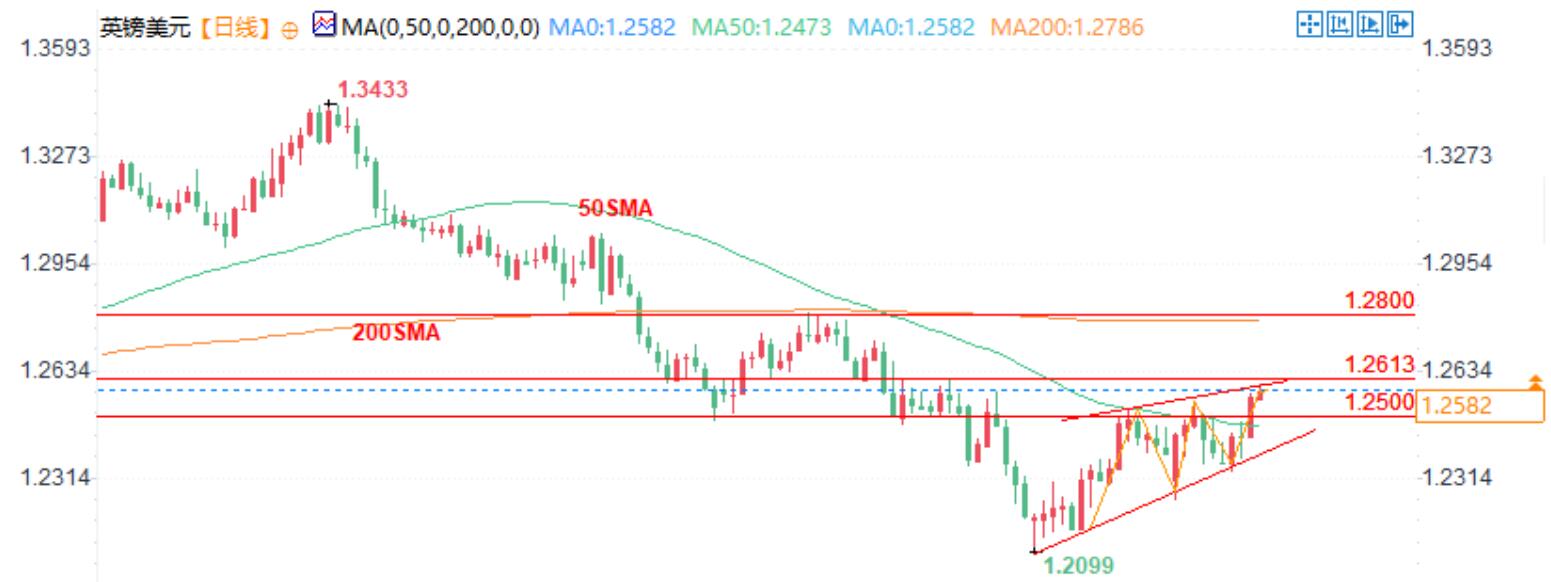Forex Trading Analysis: Unclear Prospects for USD/GBP
On Thursday (February 13th) local time, US President Trump signed an executive order expanding the scope of trade barrier assessments for trading partner countries beyond traditional tariffs, including other taxes levied on US imports such as value-added tax (VAT).
The UK was initially not expected to be most severely affected by the trade war, but this development may have changed the rules of the game in the UK market.
For months, FTSE 100 futures have been rising, with market expectations that the UK economy will be least affected by tariffs, allowing the Bank of England to continue cutting interest rates. This has also contributed to the weakness of the US dollar/pound, mainly driven by the divergence of interest rates and economic growth expectations.
However, due to better than expected economic growth in the UK at the end of last year and traders betting on the potential benefits of the Eastern European peace agreement, the constantly changing international trade situation has made the outlook for inflation and interest rates in the UK complex.
Inflation risk increases, stagflation risk becomes apparent
The decision of the United States to include value-added tax in the scope of trade barrier assessment may cause trouble for the British economy and may lead to higher tariffs on British exports. Given that the standard value-added tax rate in the UK is 20%, Washington may consider this an unfair advantage.
The economic impact cannot be ignored. Some estimates suggest that the tariffs imposed by the United States on imported goods from the UK could cut the country's GDP by 0.4 percentage points over the next two years, equivalent to approximately £ 24 billion. Industries such as automobiles, aerospace, chemicals, and machinery will be particularly vulnerable. Enterprises will face difficult choices: absorbing costs, passing them on to consumers, or shifting production to the United States to avoid switching taxes.
Therefore, inflationary pressures and stagflation risks have become the focus of attention. If businesses pass on higher costs to consumers, UK inflation may rise, challenging market expectations of a significant interest rate cut by the Bank of England and affecting USD/GBP and FTSE 100 index futures.
The prospect of the Bank of England cutting interest rates is questioned
The overnight swap market still expects the Bank of England to cut interest rates twice this year, with a small probability of a third rate cut. But this week, there has been a slight hawkish adjustment in expectations for the outlook. This indicates that some market trends driven by expectations of aggressive interest rate cuts may face the risk of stagnation or even reversal.
GBP/USD technology outlook

The US dollar/pound is testing the upward wedge formed since mid January and broke through the 50 day moving average later on Thursday. It is worth noting that the last two attempts to break through the 1.2500 level have both failed.
RSI (14) and MACD have shown bullish momentum signals, indicating that the possibility of breaking through the wedge-shaped upper track is increasing, which may open the door to testing 1.2613 (a price that has fluctuated repeatedly in recent months).
If it breaks through and closes above 1.2613, it may retest the 200 day moving average and resistance level at 1.2800. However, if the wedge-shaped resistance level is maintained, bears may seek to retreat to the wedge-shaped support level, which is currently around 1.2400.
Tips:This page came from Internet, which is not standing for FXCUE opinions of this website.
Statement:Contact us if the content violates the law or your rights
